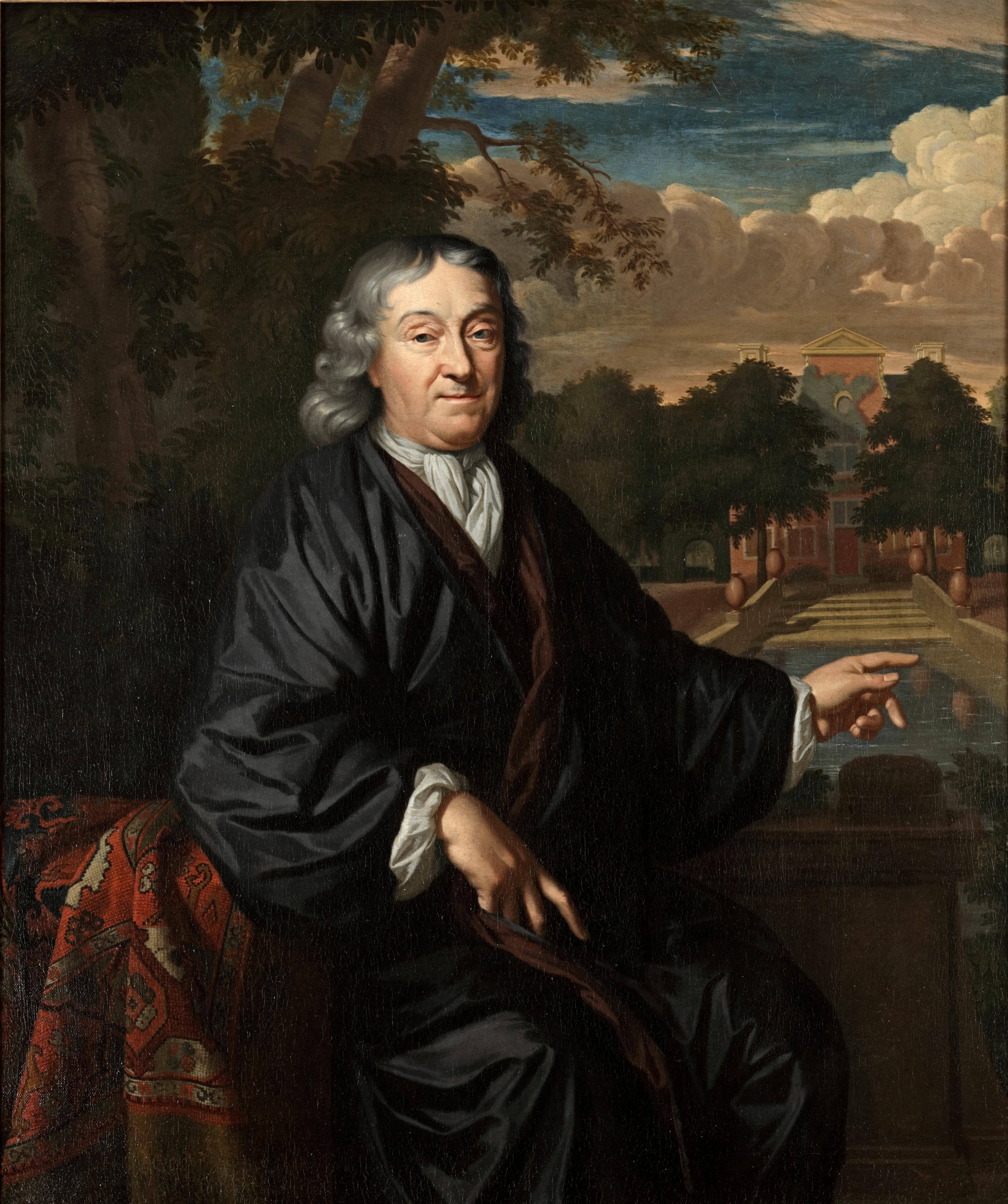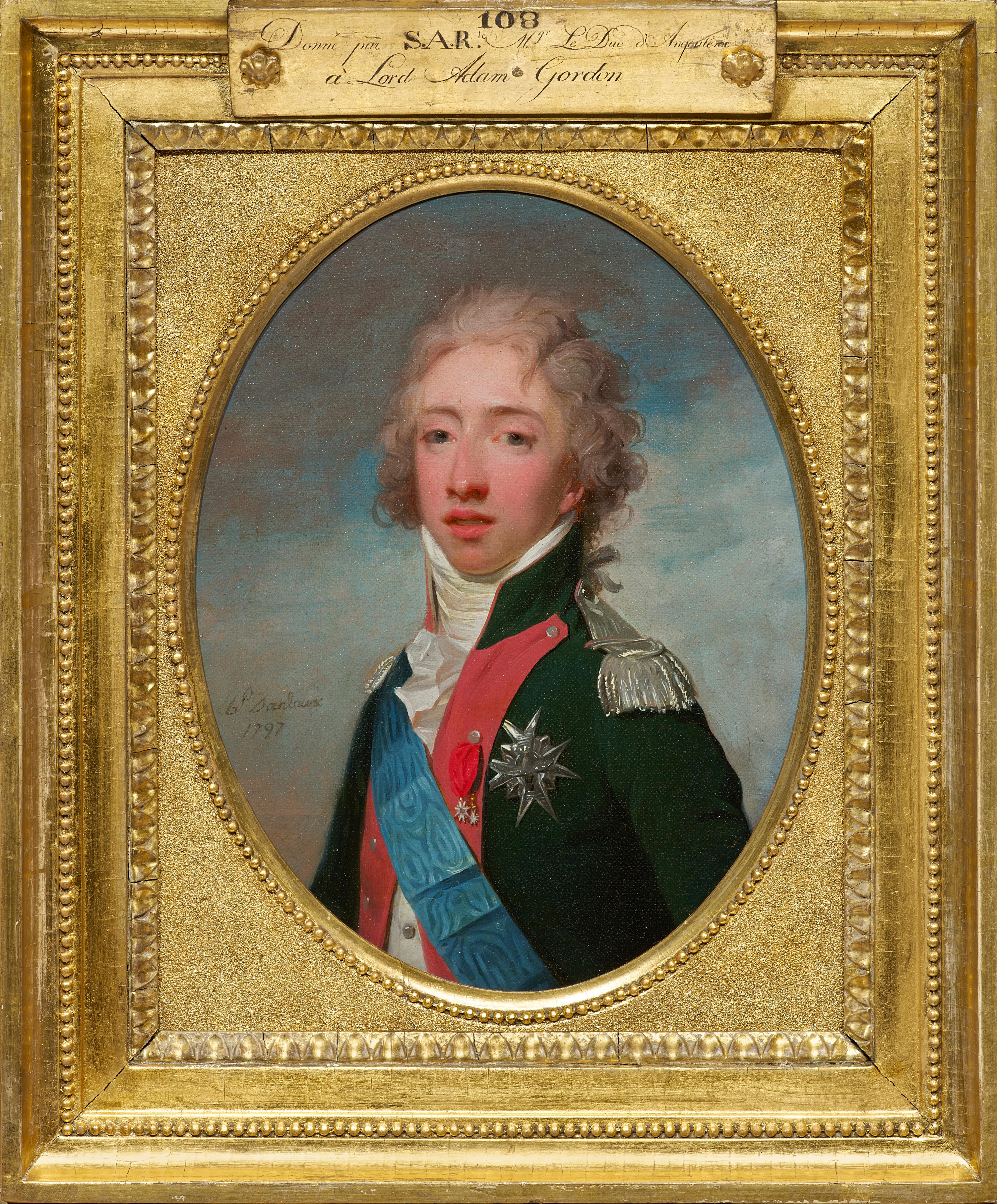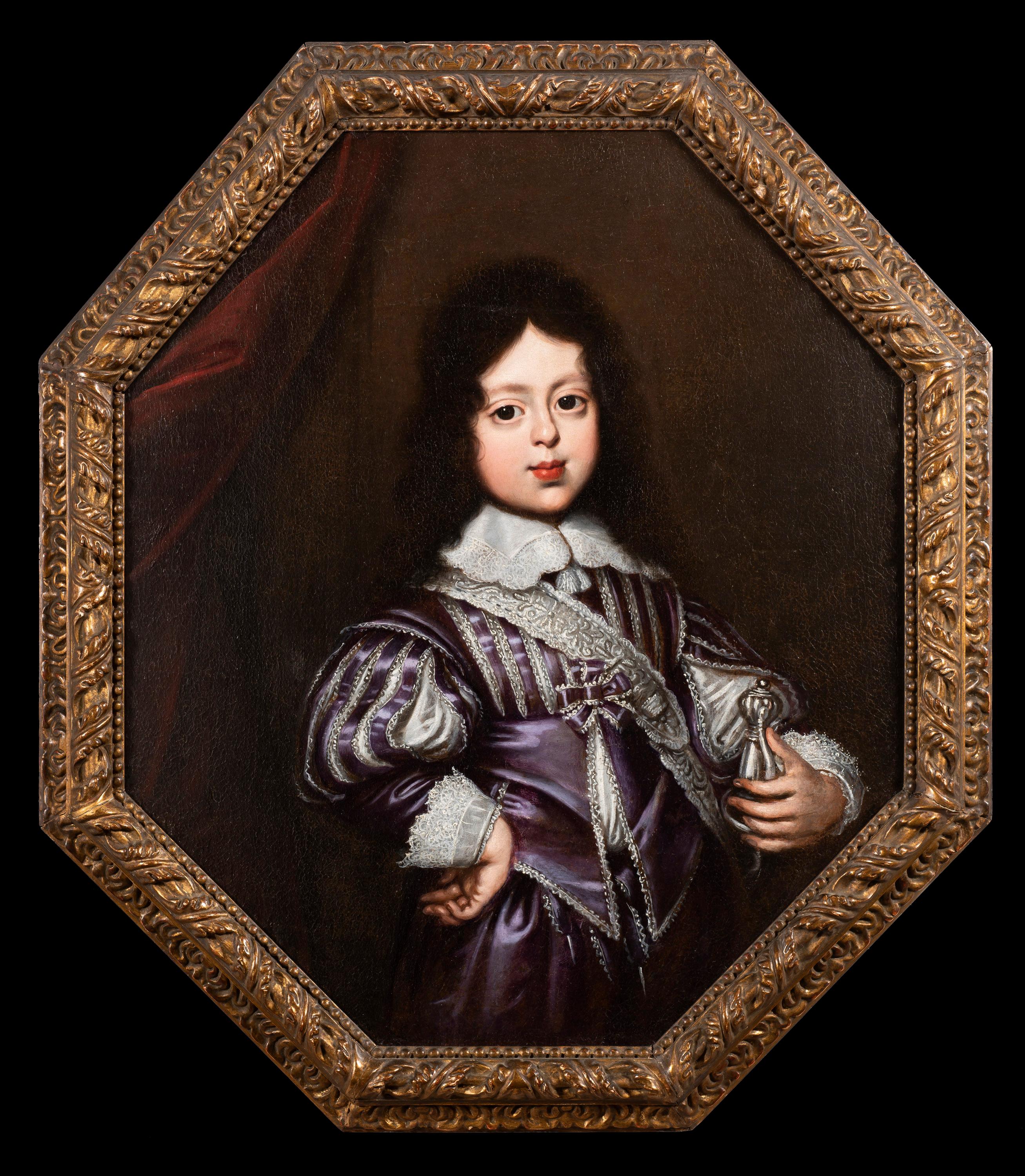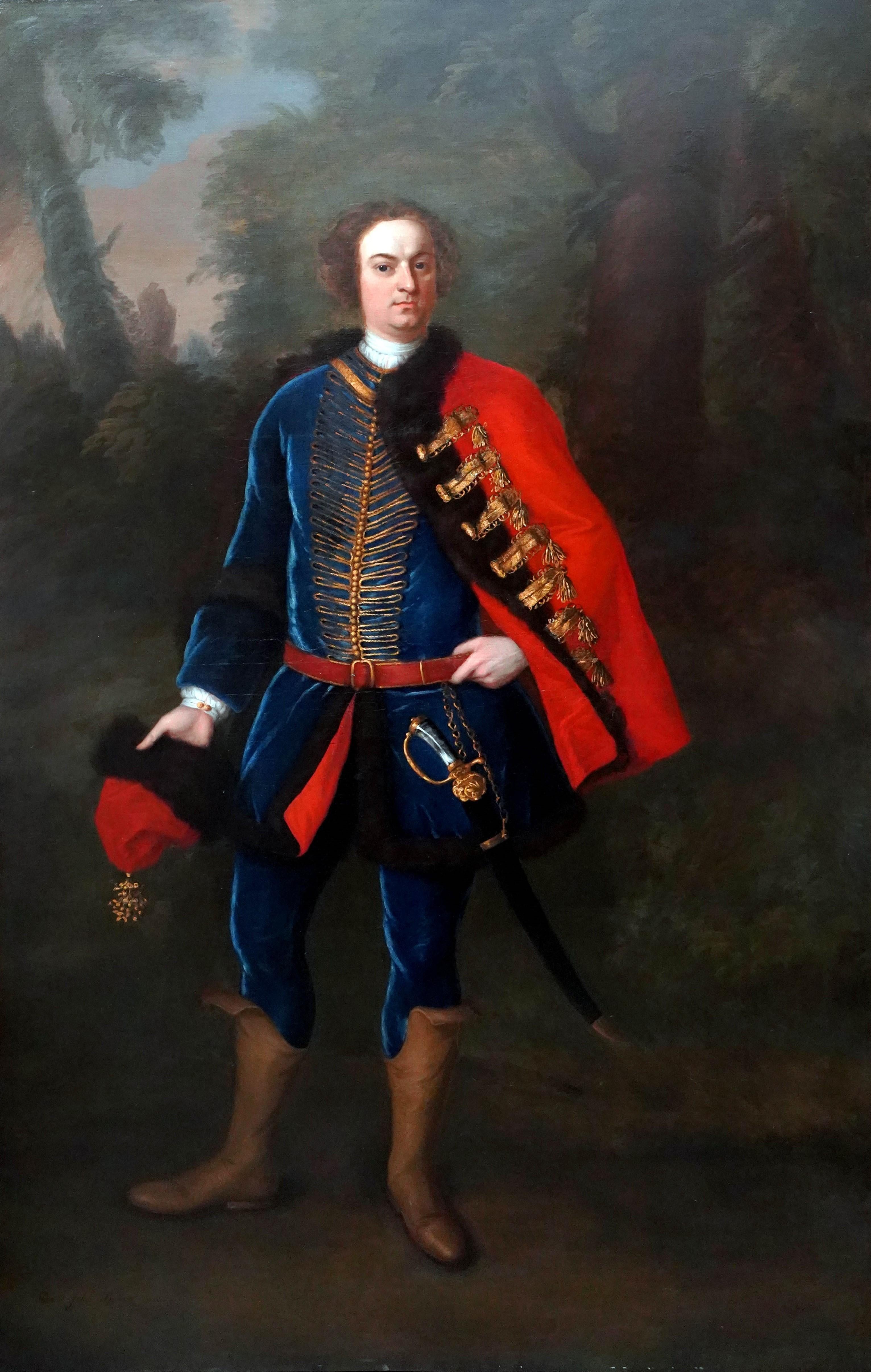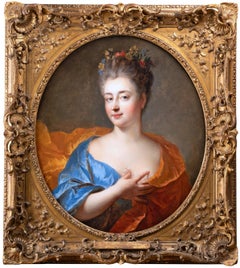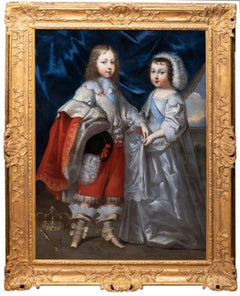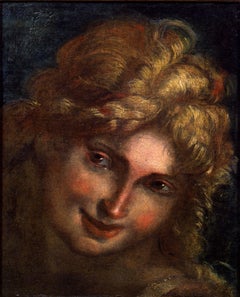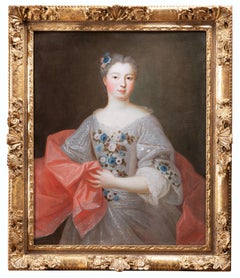
Portrait of a Princess of Condé, Paris, 18th century French, circa 1710-1715
View Similar Items
Want more images or videos?
Request additional images or videos from the seller
1 of 14
Portrait of a Princess of Condé, Paris, 18th century French, circa 1710-1715 1710
1710
About the Item
- Attributed to:Pierre Gobert (1662 - 1744, French)
- Creation Year:1710
- Dimensions:Height: 43.3 in (109.99 cm)Width: 36.22 in (92 cm)
- Medium:
- Movement & Style:
- Period:
- Condition:Very good original condition, cleaned and revarnished by our professionnal art restorer.
- Gallery Location:PARIS, FR
- Reference Number:1stDibs: LU2433213452172
About the Seller
No Reviews Yet
Vetted Seller
These experienced sellers undergo a comprehensive evaluation by our team of in-house experts.
1stDibs seller since 2023
More From This SellerView All
- 18th century French - Portrait of Duchesse de Fontanges by François de TroyLocated in PARIS, FRFrançois de Troy (1645 – 1730) - Duchesse de Fontanges The young woman, traditionally identified as Mademoiselle de Fontanges, Louis XIV's mistress, is depcited in bust facing forward, her head slightly raised and turned to the left. She seems to dominate the viewer. She is dressed in a blue satin dress and wrapped in an orange satin stole that shines with its most golden luster. His hand with graceful fingers with the index and ring fingers spread apart and the middle finger glued to the ring finger keeps slippery fabrics on his chest. Its stole flying in the wind creates an instantaneous movement and the arm bent at the elbow obliquely transforms its static pose. The perfectly oval face is enlivened by wide gray eyes, a turned-up nose, full cheeks and a mouth that sketches a half-smile. Her powdered and tied hair is studded with many flowers. The young woman wearing no jewelry, the radiance of her youth and her translucent hue are her only ornaments. The juxtaposition between the icy blue satin and the incandescent orange like the heart and the contours of a flame indicates François de Troy's great talent as a colourist. Its vibrant and nervous touch enlivens fluid fabrics, making them sparkling and changing. Their surface is worked in quivering brushstrokes, the serifs and the glazes forming an elegant arrangement. The glazes of the face are treated by superimposing light and transparent layers, producing pearly reflections and a translucent rendering, the technique in which de Troy particularly excels. By François de Troy (Toulouse 1645 – Paris 1730) Early 18th century French School Oil on canvas in oval format: h. 27.95 in, w. 25.18in 19th century period frame Framed dimensions: h. 41.34 in, w. 33.46 in Although unsigned, like the majority of works by François de Troy, our portrait has been authenticated by the French expert cabinet "Turquin" as an autograph work by François de Troy. Provenance : Paris, Heim-Gairac gallery in 1965. Thence private collection. Published in the book on the life of Louis XIV “The Sun King: Louis XIV at Versailles”, Nancy Mitford...Category
Early 18th Century Old Masters Portrait Paintings
MaterialsCanvas, Oil
- 17th French Portrait of Louis XIV & his brother, c. 1645, attributed to BeaubrunLocated in PARIS, FRRare double portrait depicting Louis XIV and his brother Philippe de France as children. 17th century French School, circa 1645, attributed to Charles and Henri Beaubrun. Oil on canvas, dimensions: h. 48.03, w. 35.43 in. Important 17th century carved and giltwood frame Framed dimensions: h. 60.23, w. 48.42 in. This rare portrait is part of a series of works illustrating the childhood of the two princes, mainly commissioned by Anne of Austria, the mother and regent, after the death of Louis XIII. Expressing her fierce desire to preserve her son's crown, she uses visual communication as a channel of sovereign expression. The portraits serve to strengthen the royal power weakened by the minority of the young Louis...Category
Mid-17th Century Old Masters Portrait Paintings
MaterialsCanvas, Oil
- Late 17th French Portrait of a gentleman, workshop of N. de Largilliere, ParisBy Nicolas de LargillièreLocated in PARIS, FRPortrait of a gentleman, workshop of Nicolas de Largilliere, circa 1690, Paris Sublime portrait of a gentleman with a palette of rich and vivid colors. He is depicted half-length, turned three-quarters, face to face. Soft and kind expression, the vivacity of the look, its calm serenity, grant an intense presence to the model. Wearing a loose wig of curly, powdered hair, this flow of vaporous curls cascades over his shoulder and enhances his face with regular features, illuminated by intense lighting and delicately nuanced by the gray tones of his emerging beard. Dressed in a shirt whose white lace collar can be seen, he wears a lapis blue velvet jacket with gold thread stripes and a moire silk lapel. Wrapped in a large red velvet coat, embroidered with silver thread, lined with brocaded yellow silk, held on his chest by a stapled leather strap. A delicate pink ribbon is passed through the collar of his shirt, the ends falling on the front like flying in the wind. Intense lighting concentrated on the figure plunges the background of the portrait into darkness. The dominant primary colors red and blue, chromatically opposed, are surprisingly harmonious and testify to the audacity of the artist who applies saturated colors to create a vibration of the material itself. The fabrics, the brushed velvet with ridges illuminated by generous serifs, the brocaded silk with a virtuoso brush, the lace and embroidery with a fine and precise design. A successful dazzle by the brilliance of the colors and a refined execution. French School circa 1690-1695 Workshop of Nicolas de Largillière (Paris, 1656-1746) Oil on canvas in oval shape H. 31.50 in, w. 24.40 in Carved and giltwood orignal frame with flower bouquets Framed dimensions: h. 41.73 in, w. 35.03 in Our work painted in the studio of Nicolas de Largillière, is marked by a learned eclecticism characteristic of this Parisian master. Inspired by the Antwerp Baroque masters Rubens and Van Dyck, the painter brings a spectacular dimension and seeks through the portrait to impress the viewer with its aesthetic and chromatic strength alone. We find his colors and this excution of baroque tradition in several portraits of this period, such as: Portrait of a gentleman, circa 1685, Chateau de Parentignat portrait of a gentleman, circa 1690, Atlanta Museum of Fine Arts portrait of a gentleman, Bemberg Foundation, Toulouse portrait of the Lord of Noirmont, National Museum of Ancient Art, Lisbon, Portugal Nicolas de Largilliere, born October 2, 1656 in Paris, where he died March 20, 1746, is a French painter. He is one of the most famous portrait painters of the 17th and 18th centuries. Nicolas de Largillière's long career spanned the reigns of Louis XIV and Louis XV, during which he established himself as a leading portrait painter. His female effigies...Category
Late 17th Century Old Masters Portrait Paintings
MaterialsCanvas, Oil
- 18th c. French Portrait of Princess of Bourbon as Hebe, Pierre Gobert, c. 1730By Pierre GobertLocated in PARIS, FRPortrait of Princess of Bourbon as Hebe Pierre Gobert, circa 1730 Presumed portrait of Elisabeth Thérèse Alexandrine of Bourbon-Condé, Mademoiselle de Sens, depicted as the goddess Hebe kidnapped by Zeus, transformed into an eagle. 18th century French School, around 1730 Pierre Gobert (1662-1744) and workshop Oil on canvas Dimensions: canvas: h. 129 cm, w. 95cm Dimensions: framed: h. 156 cm, w. 124cm Louis XIV style giltwood and cardved wood frame Large and imposing portrait of the young princess portrayed seated on an eagle in the heavens. Seen from the front, the princess is dressed in a low-cut white chiffon dress, exposing her throat. Delicately made-up oval face, dominated by large blue-gray eyes is surrounded by powdered hair, raised, releasing the forehead and the ears, and of which some locks fall on his shoulder. A large blue scarf passed over the shoulder covers her knees and flies in the wind. A garland of flowers coming from the back goes over the knees and down again on the eagle. In her right hand she holds a golden goblet and in her left hand an ewer. The eagle supporting the young woman seizes in its claws the thunderbolt (the beam of fiery lightning), the attribute of Zeus. The figure of the young woman is enlivened by the fluidity of the antique drapes...Category
Early 18th Century Old Masters Portrait Paintings
MaterialsCanvas, Oil
$23,607 Sale Price20% Off - French, circa 1730 Portrait of King Louis XV in armour, workshop of J.B. Van LooLocated in PARIS, FRPortrait of French King Louis XV (1710-1774) in armour 18th century French school Workshop of Jean Baptiste Van Loo (1684-1745) Circa 1730 Oil on canvas, dimen...Category
Early 18th Century Old Masters Portrait Paintings
MaterialsCanvas, Oil
$29,728 Sale Price20% Off - 18th c. French Portrait of a Lady by Jean Ranc (1674 - 1735), Paris circa 1700Located in PARIS, FRPortrait of a Lady with carnations By Jean Ranc (Montpellier 1674 - Madrid 1735), circa 1700 Oil on canvas in oval shape, Dimensions: h. 35.82, w. 28.34 in. Period Louis XIV giltwood and carved frame with laurel leaves. Framed dimensions: h. 42.52 in, w. 33.85 in. Provenance: Collection of the Marquis de Bailleul at the Château d'Angerville-Bailleul (before 1942). To be included in the catalog raisonné of the artist by Stephane Perreau Important portrait of a young woman depicted half-length turned three-quarters, her face looking at the viewer. Dressed in a brick red velvet dress, an elegant blue scarf envelops her figure. Hair styled “a la Fontange”, her powdered hair is raised and tied at the back with a red ribbon, several curly locks escape from her bun and fall on her back and shoulders. The perfectly oval face with regular features dominated by her straight nose is softened by her gray eyes with slightly lowered lids. The red tinged skin tones on the cheeks and cheekbones color the face and make the portrait come alive. The young woman is portrayed standing near a pot of carnations. Her strongly lighted figure stands out against an architectural background of columns. The artist's palette is made of contrasts opposing warm to cold hues. The icy electric blue contrasts with the fiery brick red, the hair powdered with white accentuates even more the flush of the cheeks. The left arm bent at the elbow, extending the open hand with slightly bent fingers in the foreground brings depth to the composition. Our portrait, an interesting testimony in the corpus of works of the painter, is part of his youthful period, around 1700-1705. The former belonging of this portrait to the Marquis de Bailleul reinforces the remarkable character of our painting. The portrait has been examined by Stéphane Perreau, specialist of Jean Ranc and will be included in the catalog raisonné currently being written, under number P. 43. The notice edited by Mr Perreau is below: "Painted around 1700-1705, this portrait of a woman is directly inherited from Hyacinthe Rigaud, the master of Jean Ranc (the hand turned over the front, in a watch...Category
Early 18th Century Old Masters Portrait Paintings
MaterialsCanvas, Oil
You May Also Like
- Italian 18th Century Oval Religious Oil on Canvas Painting with Saint DominicBy Francesco de MuraLocated in Firenze, ITThis beautiful Italian 18th Century old masters oil painting on oval canvas with giltwood frame is attributed to Solimena and features a religious scene. In this splendid oval-shaped painting are depicted Saint Dominic...Category
18th Century Old Masters Figurative Paintings
MaterialsOil, Canvas
- Oil on Canvas Painting Portrait of the Italian Noble Family of Zanardi CountBy Lucia Casalini TorelliLocated in Firenze, ITThis museum quality old master oil on canvas formal portrait painting depicting the family of the Count Zanardi is signed by the artist- the female painter Lucia Casalini Torelli- and published in a book dedicated to Casalini Torelli’s workshop and academy. This palatial masterpiece artwork comes directly from the ancient Villa Maraini Guerrieri - Palidano di Gonzaga (Mantua), an historic Italian heritage building owned by the descendants of the family portrayed for more than two centuries, until 1998. The big scale of this oil on canvas masterpiece painting states the relevance of Lucia Casalini Torelli as a painter. The present artwork is a formal family portrait painting that aim to introduce the characters depicted according to their social role in the society. The noble family is all gathered under a loggia overlooking a park, the landscape in the background is partially covered by a beautiful red cloth on the right side. The father stands up and holds the hand of his eldest son, proudly introducing his future heir. The son wears a light-blue dress and red boots, he is depicted in a serious pose holding a black tricorn hat under his arm and a rapier sword on his belt. The mother wears an elegant gold and dark green brocade dress, she is sitting with her youngest daughter on her knees while her second son is by her side. The little daughter wears a lovely long red and dress with white lace and holds an apple on her hand. The son stands next to his mother and is dressed in a brown priestly clothes. This palatial old masters piece was probably painted in 1740 due to the similarities with Cardinal Doria’ s portrait, now on display at the Doria Palace Museum, the official residence of the Prince of Genoa. The painting features original canvas (“prima tela”) and antique original patina, it is in excellent overall condition considering the age, use and its large scale. A formal detailed condition report and the results of the inspection with the UV lamp accompanied by photos is available on request. As well as for its exceptional quality and quite perfect state of conservation, this painting is particularly important and even more valuable both for the artist who painted it and for its absolutely exclusive provenance. Lucia painted the most prominent and powerful noble families of her time, the location of these paintings is unknown to the art market as it is extremely likely that the portraits are still kept in private collections. Furthermore, Lucia was one of the most appreciated artists of her time, so important that she was admitted as a member of the academy at a time when women were forbidden to attend these studies. In 1706, Felice Torelli...Category
18th Century Old Masters Portrait Paintings
MaterialsCanvas, Oil
- Head of an AngelLocated in New York, NYProcaccini was born in Bologna, but his family moved to Milan when the artist was eleven years old. His artistic education was evidently familial— from his father Ercole and his elder brothers Camillo and Carlo Antonio, all painters—but his career began as a sculptor, and at an early age: his first known commission, a sculpted saint for the Duomo of Milan, came when he was only seventeen years old. Procaccini’s earliest documented painting, the Pietà for the Church of Santa Maria presso San Celso in Milan, was completed by 1604. By this time the artist had made the trip to Parma recorded by his biographers, where he studied Correggio, Mazzola Bedoli, and especially Parmigianino; reflections of their work are apparent throughout Procaccini's career. As Dr. Hugh Brigstocke has recently indicated, the present oil sketch is preparatory for the figure of the angel seen between the heads of the Virgin and St. Charles Borrommeo in Procaccini's altarpiece in the Church of Santa Afra in Brescia (ill. in Il Seicento Lombardo; Catalogo dei dipinti e delle sculture, exh. cat. Milan 1973, no. 98, pl. 113). As such it is the only known oil sketch of Procaccini's that can be directly connected with an extant altarpiece. The finished canvas, The Virgin and Child with Saints Charles Borrommeo and Latino with Angels, remains in the church for which it was painted; it is one of the most significant works of Procaccini's maturity and is generally dated after the artist's trip to Genoa in 1618. The Head of an Angel is an immediate study, no doubt taken from life, but one stylistically suffused with strong echoes of Correggio and Leonardo. Luigi Lanzi, writing of the completed altarpiece in 1796, specifically commented on Procaccini's indebtedness to Correggio (as well as the expressions of the angels) here: “Di Giulio Cesare...Category
17th Century Old Masters Figurative Paintings
MaterialsCanvas, Paper, Oil
- Portrait of a Young BoyLocated in New York, NYSigned and dated, lower left: Louise Hersent/ 1823 Provenance: Private Collection, Chicago, by 1996 Private Collection, Florida This charming portrait of a young boy is the work of Louise-Marie-Jeanne Hersent, a little-known woman artist of the French Restoration often identified by her maiden name, Mauduit. While Hersent—as we will call her here following the signature on the painting—has been understudied, the known details of her life and career reveal that she held a privileged position in artistic life in the early nineteenth century in Paris. She exhibited at the Salon from 1810 until 1824, and in 1821 she married the painter Louis Hersent, a successful pupil of Jacques-Louis David who was patronized by Louis XVIII and Charles X. It is likely through her husband’s royal patronage that Hersent’s Louis XIV Visits Peter the Great was purchased for the Royal Collection in Versailles. In 1806, while still Louise Mauduit, she painted a portrait of Napoleon’s youngest sister, Pauline Bonaparte...Category
1820s Old Masters Paintings
MaterialsCanvas, Oil
- Portrait of a GentlemanLocated in New York, NYCircle of Jacques-Louis David (French, 18th Century) Provenance: Private Collection, Buenos Aires Exhibited: “Art of Collecting,” Flint Institute of Art, Flint, Michigan, 23 November 2018 – 6 January 2019. This vibrant portrait of young man was traditionally considered a work by Jacques-Louis David, whose style it recalls, but to whom it cannot be convincingly attributed. Rather, it would appear to be by a painter in his immediate following—an artist likely working in France in the first decade of the nineteenth century. Several names have been proposed as the portrait’s author: François Gérard, Louis Hersent, Anne-Louis Girodet (Fig. 1), Theodore Gericault, and Jean-Baptiste Wicar, among others. Some have thought the artist Italian, and have proposed Andrea Appiani, Gaspare Landi...Category
18th Century Old Masters Paintings
MaterialsCanvas, Oil
$45,000 - Portrait of a Lady with a ChiqueadorLocated in New York, NYProvenance: Torres Family Collection, Asunción, Paraguay, ca. 1967-2017 While the genre of portraiture flourished in the New World, very few examples of early Spanish colonial portraits have survived to the present day. This remarkable painting is a rare example of female portraiture, depicting a member of the highest echelons of society in Cuzco during the last quarter of the 17th century. Its most distinctive feature is the false beauty mark (called a chiqueador) that the sitter wears on her left temple. Chiqueadores served both a cosmetic and medicinal function. In addition to beautifying their wearers, these silk or velvet pouches often contained medicinal herbs thought to cure headaches. This painting depicts an unidentified lady from the Creole elite in Cuzco. Her formal posture and black costume are both typical of the established conventions of period portraiture and in line with the severe fashion of the Spanish court under the reign of Charles II, which remained current until the 18th century. She is shown in three-quarter profile, her long braids tied with soft pink bows and decorated with quatrefoil flowers, likely made of silver. Her facial features are idealized and rendered with great subtly, particularly in the rosy cheeks. While this portrait lacks the conventional coat of arms or cartouche that identifies the sitter, her high status is made clear by the wealth of jewels and luxury materials present in the painting. She is placed in an interior, set off against the red velvet curtain tied in the middle with a knot on her right, and the table covered with gold-trimmed red velvet cloth at the left. The sitter wears a four-tier pearl necklace with a knot in the center with matching three-tiered pearl bracelets and a cross-shaped earing with three increasingly large pearls. She also has several gold and silver rings on both hands—one holds a pair of silver gloves with red lining and the other is posed on a golden metal box, possibly a jewelry box. The materials of her costume are also of the highest quality, particularly the white lace trim of her wide neckline and circular cuffs. The historical moment in which this painting was produced was particularly rich in commissions of this kind. Following his arrival in Cuzco from Spain in the early 1670’s, bishop Manuel de Mollinedo y Angulo actively promoted the emergence of a distinctive regional school of painting in the city. Additionally, with the increase of wealth and economic prosperity in the New World, portraits quickly became a way for the growing elite class to celebrate their place in society and to preserve their memory. Portraits like this one would have been prominently displayed in a family’s home, perhaps in a dynastic portrait gallery. We are grateful to Professor Luis Eduardo Wuffarden for his assistance cataloguing this painting on the basis of high-resolution images. He has written that “the sober palette of the canvas, the quality of the pigments, the degree of aging, and the craquelure pattern on the painting layer confirm it to be an authentic and representative work of the Cuzco school of painting...Category
17th Century Old Masters Paintings
MaterialsCanvas, Oil




